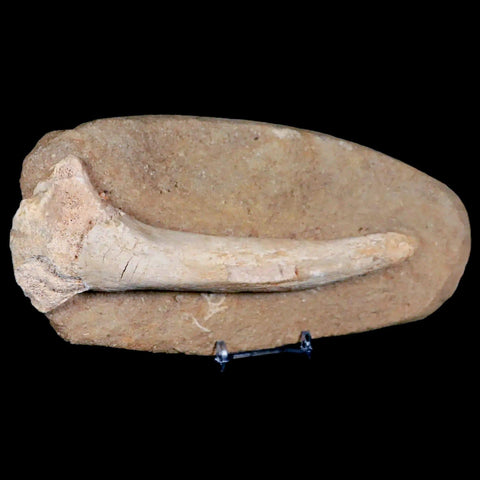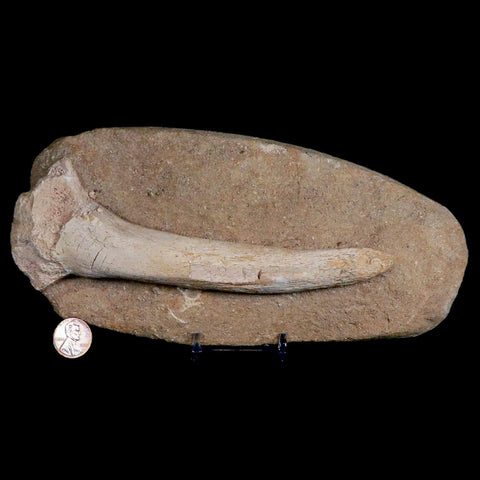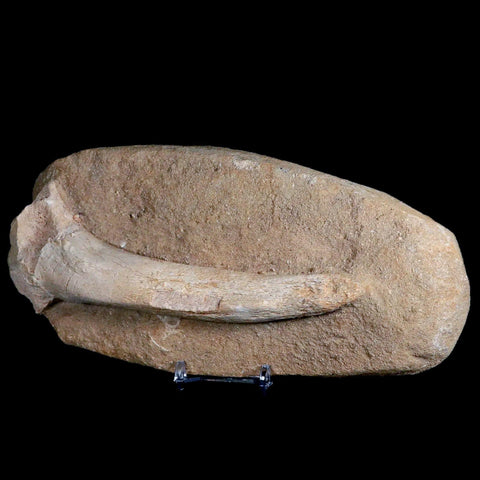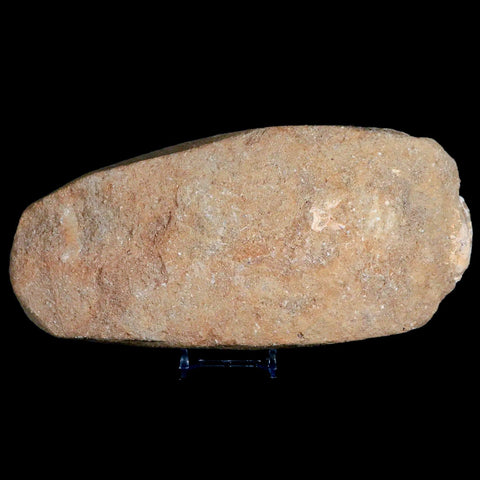8.2" Crocodile Fossil Bone Cretaceous Age Kem Kem Morocco Crocodilian Stand
Location: Kem Kem, Morocco
Weight: 2 Pounds 4.4 Ounces
Dimensions: 8.2 Inches Long, 4 Inches Wide, 1.7 Inches Thick (Matrix)
The item pictured is the one you will receive.
Comes with a Free Stand.
Cretaceous Age through to the Eocene Age
There are 23 species of crocodilians, in three families — crocodiles (13 species), alligators (two species) and caimans (six species), and gharials (two species) — living in 100 tropical and sub-tropical countries. All reside within 4000 kilometers of the equator.
Crocodiles are essentially Old World creatures and alligators and caimans are New World ones. How can you tell them apart? 1. relatively narrow snouts; 2. lower teeth that are visible when their mouths are closed; and 3. a special notch on either side of their upper jaw for the fourth tooth of the lower jaw. Alligators have a wider, more rounded snout, their lower teeth are not visible and rest inside their upper teeth and mouth and they lack the notch. Gharials can easily be recognized because they have long, very slender snouts.
Crocodiles have been around for 240 million years, appearing 25 million years before the first dinosaurs and 100 million years before the first birds and mammals. Crocodiles that lived 230 million years ago were up to 40 feet long. "Our primate ancestors were ratty little things that went around stealing eggs," Dr. Perran Ross, a crocodile specialist, and professor of wildlife ecology and conservation at the University of Florida told the New York Times. "Ancestral crocodiles had basically the same body plan we see today, apparently because it works."
Crocodiles are regarded as the closest living relatives of dinosaurs. They have many dinosaur-like features including bird-like arrangements of the hip bones and teeth that are mounted in sockets rather than being fused directly to the jawbone. Recent taxonomic analysis has reasoned that dinosaurs, crocodiles, and birds should be classified in same the branch of animals.
















